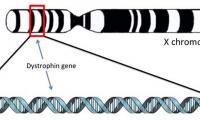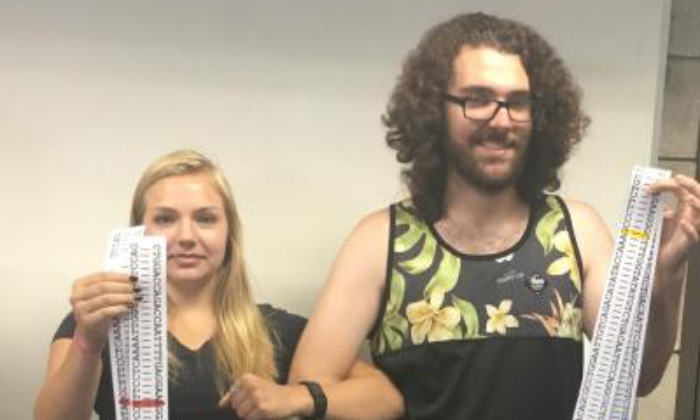Guest post by Michelle Smith, Cornell University.
Teaching genetics and looking for some new course ideas? Check out CourseSource, which is a peer-reviewed, open-access journal that publishes articles describing undergraduate biology activities. All the activities are aligned with learning goals written by life science professional societies, including GSA.
Here are some recent genetics articles:
Meiosis: A Play in Three Acts, Starring DNA Sequence
 Newman and Wright designed a new way to have students demonstrate meiosis with long strips of paper that contain DNA sequence. The questions instructors ask students help them learn about sister chromatids, homologous chromosomes, and chromosome pairing. The big “ah-ha” moment comes when students figure out they can use DNA sequence to find their homologous pair.
Newman and Wright designed a new way to have students demonstrate meiosis with long strips of paper that contain DNA sequence. The questions instructors ask students help them learn about sister chromatids, homologous chromosomes, and chromosome pairing. The big “ah-ha” moment comes when students figure out they can use DNA sequence to find their homologous pair.
A Clicker-based Case Study that Untangles Student Thinking About The Processes in The Central Dogma

Pelletreau and colleagues from six different institutions designed a clicker-based case study activity that asks students to predict the effects of different types of mutations on DNA replication, transcription, and translation. Students often have mixed models of the Central Dogma of Biology and this activity helps them better understand what information is encoded at each stage.
A Hands-on Introduction to Hidden Markov Models
 Weisstein and colleagues designed an interactive lecture, examples, and homework problems to teach students about Hidden Markov Models (HMM), which form the basis for many gene predictors. Student understanding of HMM is becoming increasingly critical in the era of big data, where biologists and computer scientists often collaborate on important scientific questions.
Weisstein and colleagues designed an interactive lecture, examples, and homework problems to teach students about Hidden Markov Models (HMM), which form the basis for many gene predictors. Student understanding of HMM is becoming increasingly critical in the era of big data, where biologists and computer scientists often collaborate on important scientific questions.
Linking Genotype to Phenotype: The Effect of a Mutation in Gibberellic Acid Production on Plant Germination
 CourseSource also publishes laboratory lessons that can be performed in a variety of environments. For example, Mann and colleagues developed a hands-on activity about the effect of the plant hormone gibberellic acid (GA) on plant germination.
CourseSource also publishes laboratory lessons that can be performed in a variety of environments. For example, Mann and colleagues developed a hands-on activity about the effect of the plant hormone gibberellic acid (GA) on plant germination.
There are many more activities covering concepts such as linkage, insertion/deletion mutations, conservation biology, and genetically modified organisms. Having access to these high-quality, well-vetted active learning activities can help you with class preparation and provide new learning opportunities for your students.
About the author:
 Michelle Smith is Editor in Chief of CourseSource and an Associate Professor in the Department of Ecology and Evolution at Cornell University.
Michelle Smith is Editor in Chief of CourseSource and an Associate Professor in the Department of Ecology and Evolution at Cornell University.













